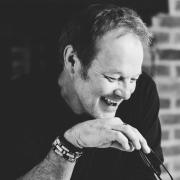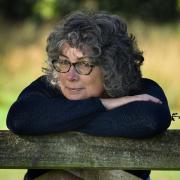At the Lewes Bonfire Celebrations this November, 17 flaming crosses will be carried in remembrance of Sussex people burnt at Lewes in the 1550s, victims of the relentless persecution of Protestants during the reign of Queen Mary. Words and pictures by Chris Horlock

Whatever else may happen at the annual Lewes bonfire festivities, one annual tradition that doesn’t change is the carrying of flaming crosses through the streets, in memory of 17 Sussex people burnt at the stake in the town between 1555 and 1557. This was during the reign of Queen Mary (often called Bloody Mary), who sought to overturn the Church of England, set up by her father, Henry VIII. She was more Spanish than English and had been brought up in a strict Catholic fashion by her mother Catherine of Aragon, Henry’s first wife. On becoming queen in 1553, she was determined to re-establish Catholicism throughout the country. Any Protestant who explicitly defied her, stuck to the old English prayer book, refused to go to Mass, and was too open or vocal in their defiance, she had arrested, tried for heresy and if found guilty, sentenced to death by burning at the stake.
A memorial to the 17 Lewes Martyrs (built in 1901) stands on Cliffe Hill, overlooking the town, giving their names and the places they came from:
DIRICK CARVER, OF BRIGHTON.
THOMAS HARLAND, AND JOHN OSWALD, BOTH OF WOODMANCOTE.
THOMAS AVINGTON, AND THOMAS REED, BOTH OF ARDINGLY. THOMAS WOOD (A MINISTER OF THE GOSPEL) OF LEWES.
THOMAS MYLES, OF HELLINGLY.
RICHARD WOODMAN, AND GEORGE STEVENS, BOTH OF WARBLETON.
ALEXANDER HOSMAN, WILLIAM MAINARD, AND THOMASINA WOOD, ALL OF MAYFIELD.
MARGERY MORRIS, AND JAMES MORRIS (HER SON) BOTH OF HEATHFIELD.
DENIS BURGIS, OF BUXTED.
ANN ASHDON, OF ROTHERFIELD.
MARY GROVES, OF LEWES.
Brewer and staunch Protestant Dirick Carver, aged 40, was the first to be burnt. In October 1554, he was leading a Bible-reading session at his home in Black Lion Street, Brighton. At the order of the High Sheriff of Sussex, he was arrested and brought before the court of Edmund Bonner, the Bishop of London, who found him guilty of heresy. He exasperated his inquisitors by insulting both them and the Catholic faith: “Ye think ye can make a God. Ye make a pudding.” On 22 July 1555, Carver was burnt outside the Old Star Inn, Lewes, where the Town Hall stands today. The Sheriff oversaw the execution, and at one point tried to snatch away the Bible Carver was carrying, to throw it into the flames. Carver held onto it, then threw it away himself, into the crowd. His final words were: “Lord have mercy upon me, for unto thee I commend my spirit and my soul doth rejoice in thee!” His Bible survives, supposedly bloodstained, in possession of the Sussex Martyrs Commemoration Council.
Two years later, on 6 June 1556, four other Protestants were put to death on the same site as Carver – Thomas Harland, a carpenter by trade, John Oswold, a husbandman, and Thomas Avington and Thomas Reed. They had all staunchly rejected the Mass, mainly on the grounds that the language was foreign to them and incomprehensible. Despite these horrific executions and many others across the country, Bishop Bonner – ‘monitoring’ the situation for the queen – still felt too many Protestants were defying her. So he arranged one of the largest human bonfires the country had seen. The third and last burnings at Lewes, on the same site as the others, involved Richard Woodman, George Stevens, Alexander Hosman, William Mainard, Thomasina Wood, Margery Morris, James Morris (Margery’s son), Denis Burges, Ann Ashdon and Mary Groves. These 10 were all burnt at the same time, on 22 June 1557. Only Woodman and Hosman had any kind of trial. The others had been detained within two or three days prior to their executions and burnt without any real evidence of condemnation from the authorities. Anne Ashdon was a married woman, with several grown-up sons in their twenties. William Mainard was a member of an ancient Mayfield family, with Thomasina Wood and Alexander Hosman his servants. Richard Woodman was a man of some wealth and standing at Warbleton, by profession an ‘iron master’. In the village churchyard, there’s a memorial to him (he lived and worked virtually next door); some of the hinges and fittings that are still in place on the church doors were made by him. He was accused of criticising the rector of his local church, calling him Mr Facing Both Ways (for being Protestant under Henry VIII, then Catholic under Mary), which was in direct contravention of a 1553 law which protected preachers from criticism when giving sermons. Woodman was also accused of setting himself up as a preacher, even marrying people and conducting baptisms. He wrote a very detailed and moving account of how he eluded arrest and survived for several weeks at a secret lodging, with his wife bringing him food and drink. Ultimately he was betrayed by his own brother, took flight and would have outrun his captors had he had his shoes on. In all, 36 Sussex people were executed for defying Queen Mary, 17 at Lewes and the rest at various other places throughout the county including Steyning, Chichester, Mayfield and East Grinstead. A total of 284 Protestants were burnt throughout the country during her reign.
It was only when Mary’s sovereignty came to an end in 1558 that Protestants, now with the more liberal Elizabeth I as their queen, were able to return to open worship. “There is only one Christ, Jesus, one faith,” said the Queen – “all else is a dispute over trifles.” The Lewes bonfire celebrations ensure the 17 Sussex Martyrs are never forgotten in their native county. In the past, religious animosity was an overriding feature of the festivities, but this has largely gone, although an effigy of the Pope is still regularly burnt and the notorious traveller’s caravan that was torched in 2003 caused a lot of controversy. Today, the message is that non-conformity should be tolerated, in all its forms. As the Grand United Procession passes through the High Street of the town, watched by thousands of residents and visitors, the Cliffe Memorial is floodlit and clearly visible from the site of the executions. It bears this fitting inscription:
AND THEY OVERCAME, BECAUSE OF THE BLOOD OF THE LAMB, AND BECAUSE OF THE WORD OF THEIR TESTIMONY, AND THEY LOVED NOT THEIR LIFE EVEN UNTO DEATH” REV. XII. II.
READ ON
• VIDEO* Lewes Bonfire Night 2014 timelapse - Stunning timelapse footage from the world famous Lewes Bonfire Night from YouTube user JR Aperture
• Young racing driver from Lewes aiming for Formula One - Sixteen-year-old Jack Bartholomew from Lewes aims to become a Formula One driver



























